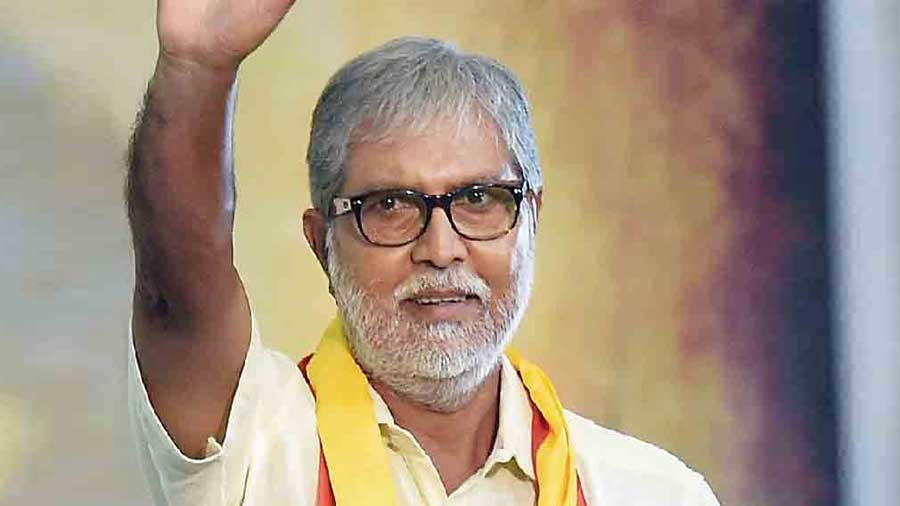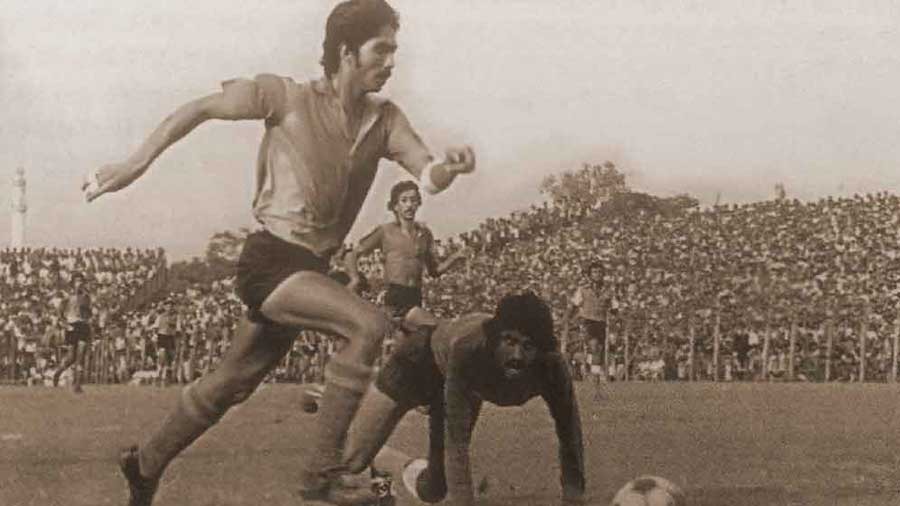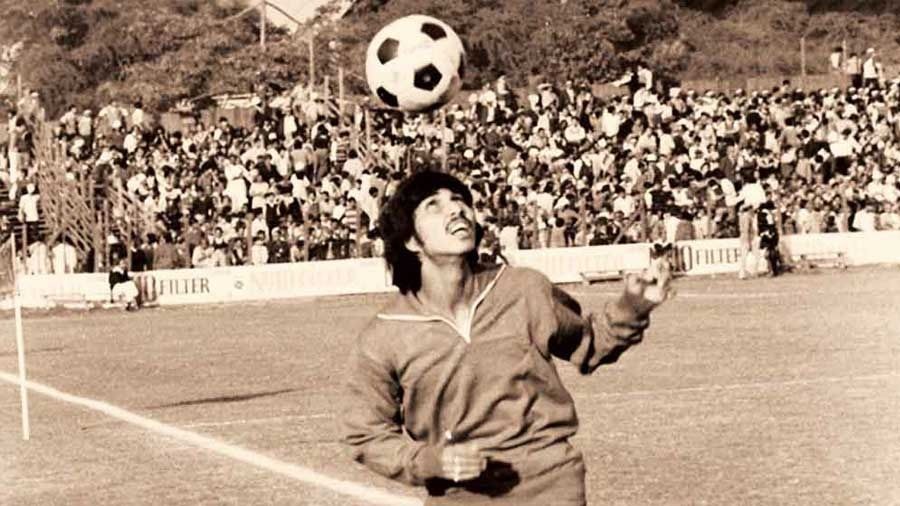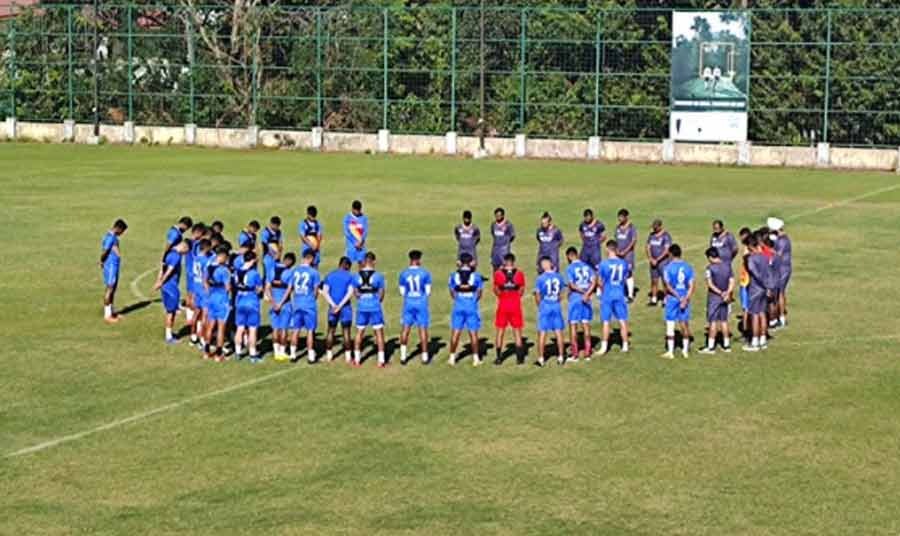Paolo Rossi would dart in and out of our dreams just the way he played. Supple, slight of body, like an arrow freed of the physics of distance and direction.
Karl-Heinz Rummenigge, tall, erect, of Teutonic bearing, captivated our consciousness as a commander does. Like a god he played, the tougher the scene, the more versatile he would be.
Falcao reminded us of, well, what else? That swooping hunter bird from the higher skies, where predators keep an eye on prey far beneath. Pity, that was Rossi’s cup.
Football changed inexorably for Calcuttans after the 1982 FIFA World Cup, the first time the semifinals and the final were telecast live by the national broadcaster, and the city and its people got a glimpse of the stars at play.

Surajit Sengupta passed away on February 17. He was 70 TT archives
How they dazzled. What speed, what feral power of shot. Balls that flew like comets. What followed was the inevitable comparison — with the brand of football the city was used to. The Maidan, so long its real-life theatre of passion and frenzy, seemed like a leisured reel where play ambled along and there was time to marvel at the contrast between the sky and the grass, as commentators reminisced and bantered about things past.
Yet, there were some who stood out, as great lines of literature do, incandescent as an unforgettable memory. Surajit Sengupta was one such memory.
He sprinted, weaving right, feinting left, dribbling through a tangle of legs
A long time back it was, in the monochrome Seventies, when the Maidan would still decide whether the next few days would be unmitigated agony or endless ecstasy. If the mind’s memory doesn’t play tricks, it was towards the end of that decade; East Bengal versus Mohammedan Sporting, the match in its last lap, still a stalemate. A draw would be tragedy for East Bengal, the point lost as good as forfeiture of the League.

Sengupta represented the Big Three clubs of the Maidan Hariprasad Chattopadhyay
It was in such a situation that someone had passed the ball to Sengupta in East Bengal’s half. A spasm of hope ran through the crowd of red-and-gold, their colour badge of honour and identity that afternoon. Sengupta turned, half a circle towards the Mohammedan Sporting half, and balanced the ball on his toes. The field lay before him like a chessboard, black, white and impenetrably cluttered. Then he broke into a run. Through the rival midfield he sprinted, weaving right, feinting left, dribbling through a tangle of legs, the galleries a raucous blur as he neared the box. Then, suddenly, at the edge he stopped, that split-second stasis before the sound of thunder.
Did he break the deadlock? He didn’t. Immaterial. Because he did something more important, more enduringly intrinsic than the momentary exigencies of victory, tie or loss. That afternoon, he chiselled into a fan’s memory what artistry meant on a football field.
The bond between a sporting icon and devotee is an inerasable bond
He did something else too: create an inerasable bond — between a star and a pre-teen boy on the cusp of sporting comprehension. That’s where sport transcends the opacity of statistics, however infallible numbers might be. That is because this bond between a sporting icon and devotee is not only unshakeable, it is redemptive too, impervious to taint and sustained only by expectations of glory on the field of play. One of the few instances the idea of greatness — shared greatness — comes closest to tangibility.

The Maidan was Sengupta’s obliging theatre of stardom TT archives
That link snapped on Thursday, the Covid-19 pandemic claiming yet another victim. Sengupta, who had been on the ventilator, died on February 17. He was 70. For the Maidan greens of the city, it has been a double whammy. Less than a month ago, Subhas Bhowmick, another stalwart of the 1970s, had moved on.
Both Sengupta and Bhowmick were part of the East Bengal squad that humiliated arch-enemy Mohun Bagan in the 1975 IFA Shield final, a scoreline that still thrills and rankles, subject to which side of the loyalty fence one is — red-and-gold or green-and-maroon. Sengupta, who played on the wing, had started the 5-0 waltz that autumn day, swerving past two rival defenders to open the scoring early on in the game. He came within a shot of scoring another later on, but the finishing touch would be given by a fellow forward. He was 24 then, a young player on the rise, the Maidan his obliging theatre of stardom.

Both Sengupta and (above) Subhas Bhowmick, another stalwart of the 1970s, were part of the East Bengal squad that humiliated arch-enemy Mohun Bagan in the 1975 IFA Shield final 5-0, a scoreline that still thrills and rankles TT archives
Few on the Maidan have commanded such uncomplicated adoration
The year earlier he had joined East Bengal from Mohun Bagan, football’s adaptation of seasonal flux and permutations that were an implicit recognition of talent and skill; Sengupta had both. But what turned him into a lovable icon was the man himself; modest, unassuming and unfailingly polite.

Sengupta in Mohun Bagan’s red and green @atkmohunbaganfc/Twitter
At times he may have disappointed, either on the frenetic field of skirmish or in the shuffle of jersey, but it would be temporary exasperation. Nobody grudged the man himself.
Some even rewired club loyalties to support the team Sengupta played for. Like this middle-aged veteran of the galleries who one day bought a ticket on the Mohammedan side.
“Aren’t you an East Bengal supporter?” somebody had asked.
“I am a Surajit supporter,” the veteran had replied, unperturbed.

East Bengal players observe a minute’s silence as a mark of respect for Sengupta @sc_eastbengal/Twitter
That was sometime after Sengupta had made a late-career switch to Mohammedan Sporting. Few on the Maidan have commanded such uncomplicated adoration.
In a way it summed up Sengupta’s hold on the Maidan’s collective psyche. For old-timers, now that he is gone, that hold will manifest itself in unexpected moments, like the memory of that dribble through flailing legs. And, of course, in the nostalgia for an era inexorably gone. Long before the Rossis and the Rummenigges, there was Surajit and his comrades of the Maidan.
